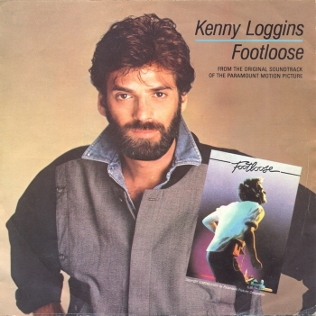 When 1981 rolled around, rock music was undergoing a quiet revolution. The new decade was pulling away from the shaggy-haired chaos of the ’70s, ushering in the synths, polish, and studio precision that would define the next ten years. Into that crossfire of eras walked Rush, the Canadian power trio who had already carved out a reputation as prog rock’s most technical and daring outliers. Then came Moving Pictures, and its opening track — “Tom Sawyer.” It wasn’t just a song; it was a manifesto. It fused intellect and rebellion, synthesizers and thunder, precision and chaos. And four decades later, it still stands as one of the most technically brilliant, thematically rich, and emotionally stirring songs in rock history.
When 1981 rolled around, rock music was undergoing a quiet revolution. The new decade was pulling away from the shaggy-haired chaos of the ’70s, ushering in the synths, polish, and studio precision that would define the next ten years. Into that crossfire of eras walked Rush, the Canadian power trio who had already carved out a reputation as prog rock’s most technical and daring outliers. Then came Moving Pictures, and its opening track — “Tom Sawyer.” It wasn’t just a song; it was a manifesto. It fused intellect and rebellion, synthesizers and thunder, precision and chaos. And four decades later, it still stands as one of the most technically brilliant, thematically rich, and emotionally stirring songs in rock history.
The Genesis of a Modern Rebel
By the dawn of the ’80s, Rush had already weathered their fair share of musical evolution. From the heavy Zeppelin-inspired grooves of Fly by Night to the expansive conceptual odysseys of 2112 and Hemispheres, they’d built a cult-like following that revered their musicianship and mythological storytelling. But as the band approached Moving Pictures, they sought something more grounded — songs that could still show off their technical wizardry but would also connect instantly.
“Tom Sawyer” emerged from that middle ground. The track was co-written by drummer and lyricist Neil Peart with Canadian poet Pye Dubois, who presented the band with a poem about a “modern-day rebel” — an antihero archetype who was fiercely individualistic, resistant to conformity, and perpetually misunderstood. Peart took Dubois’s framework and turned it into a kind of philosophical riddle. “Tom Sawyer” wasn’t a literal character; he was an idea. A stand-in for anyone who walks their own path, answers to no one, and sees through the world’s illusions.
When the band began recording it in late 1980, something electrifying happened. The chemistry between Peart, bassist/vocalist Geddy Lee, and guitarist Alex Lifeson had never been sharper. What they created in “Tom Sawyer” was both a sonic assault and an existential statement — a perfect storm of brains and brawn.
The Sound of Controlled Chaos
From its first shimmering synth tone, “Tom Sawyer” announces itself as something futuristic. Geddy Lee’s Oberheim synthesizer creeps in like a transmission from another planet, hovering just long enough before Lifeson’s jagged, echoing guitar riff slices through the haze. Then comes Peart — that impossibly tight, thunderous drumming — propelling the song forward with a precision that feels almost inhuman.
The song’s structure is deceptively simple, clocking in at just over four minutes. Yet within that space, Rush manages to incorporate more rhythmic complexity and dynamic interplay than most bands could fit into an entire album. Peart’s drumming, in particular, is nothing short of breathtaking. Every fill, every cymbal crash, every ghost note feels like a line of code in some grand mathematical equation.
The breakdown section — where the band dips into a quieter, almost psychedelic interlude before exploding back into full force — is a masterclass in tension and release. The synths shimmer, Lifeson’s guitar bends and echoes, and Lee’s bass moves with muscular elegance. It’s both mechanical and human, a song that feels like it could have been performed by cyborgs with soul.
Lyrically, the song is pure Neil Peart — thoughtful, cryptic, yet deeply emotional. “His mind is not for rent to any god or government” remains one of the most defiant lines ever written in rock music. It’s a challenge to anyone who tries to impose ideology, authority, or conformity. Yet it’s not arrogance; it’s self-possession. Peart’s modern rebel is no anarchist — he’s an observer, detached yet deeply aware.
A Song Beyond Time
By the time “Tom Sawyer” hit airwaves in 1981, it was clear Rush had struck a chord that transcended their progressive roots. This was a radio hit that sounded nothing like anything else on radio. It was too weird, too complex, too intellectual — and yet, somehow, it worked. The song became Rush’s defining anthem, their calling card to the mainstream world.
The magic of “Tom Sawyer” lies in its duality. It’s a thinking person’s rock song that still kicks like a sledgehammer. It appeals to musicians who marvel at its technicality, and to casual listeners who simply feel its pulse. That balance — between brain and body — is what’s kept it alive for over forty years.
Geddy Lee’s vocal delivery deserves special recognition. His high, nasal tone has always divided listeners, but on “Tom Sawyer,” it’s perfect. He sings not like a man, but like an oracle delivering encrypted wisdom. When he belts out “No, his mind is not for rent,” it’s not just a lyric — it’s a war cry for independence. Combined with his virtuosic bass playing (which dances effortlessly between rhythm and melody), Lee anchors the song’s mechanical precision with human intensity.
Alex Lifeson’s guitar work, meanwhile, is both aggressive and textured. His tone is unmistakable — metallic yet warm, complex yet accessible. The solo he delivers midway through the song isn’t showy; it’s architectural. Every note feels like a support beam in a towering structure of sound. Lifeson’s genius lies in how he balances technical prowess with emotional restraint.
Cultural Resonance
“Tom Sawyer” became an anthem for a generation of outliers. It spoke to the misfits, the dreamers, the people who couldn’t quite find their place in a conformist world. During the Reagan-era ’80s — a time of consumerism, corporate culture, and rising conformity — its message felt like an act of rebellion.
Over the years, the song’s influence has rippled far beyond the realm of rock. It’s been featured in films, television, and video games — from Freaks and Geeks to Rock Band — and has become a shorthand for intellectual rebellion. Even those who don’t know Rush by name often recognize that iconic synth riff or Peart’s explosive drum fills.
Musicians across genres have cited “Tom Sawyer” as a formative influence. Metal bands admired its precision; alternative bands respected its boundary-pushing spirit; and electronic artists saw in it the early fusion of analog and digital sound. The song predicted the hybrid future of music — where guitars and synths could coexist, where emotion and intellect weren’t mutually exclusive.
The Peart Factor
No discussion of “Tom Sawyer” can ignore Neil Peart’s towering contribution. As both drummer and lyricist, Peart shaped Rush’s identity more than anyone. His drumming on this track remains a benchmark of technical mastery — an explosion of control and creativity that continues to awe drummers worldwide.
But it’s his lyrics that truly define the song. Peart had an uncanny ability to combine philosophy with poetry, intellect with instinct. “Tom Sawyer” captures his lifelong fascination with individuality and freedom. It’s not a song about teenage rebellion or social defiance in the traditional sense. It’s about something deeper — the right to be oneself, to think freely, to live without surrender.
When Peart passed away in 2020, “Tom Sawyer” took on new meaning. It became both a tribute and a time capsule — a snapshot of Peart’s brilliance and the spirit he embodied. Hearing it now, you can’t help but feel the weight of his loss, but also the immortality of his art.
The Song That Defined Rush
Though Rush had many great albums and dozens of complex masterpieces, “Tom Sawyer” remains the song that defines them in the public imagination. It condensed everything they stood for — virtuosity, intellect, defiance — into a perfectly balanced four-minute track.
It’s also a perfect entry point for anyone new to Rush. From there, listeners often go backward into the deeper prog labyrinths of 2112 or forward into the synth-heavy landscapes of Signals and Grace Under Pressure. But “Tom Sawyer” is the bridge — the song that connects all versions of Rush and all generations of their fans.
The Legacy of the Modern-Day Warrior
More than forty years after its release, “Tom Sawyer” still feels alive. It’s a staple of classic rock radio, a showstopper in every Rush live set, and a rite of passage for drummers everywhere. But more than that, it remains a statement — one that has aged remarkably well in a world still obsessed with conformity.
The modern-day warrior still stands tall, his mind still not for rent. Every time those synths buzz and Peart’s drums ignite, it feels like a declaration that freedom — intellectual, creative, personal — is still worth fighting for.
When Rush performed “Tom Sawyer” live, they played it with the same precision and energy decades after its release. Watching them on stage, you could feel the song’s pulse not as nostalgia, but as living philosophy. It wasn’t just about 1981 anymore; it was about every era where individuality mattered.
“Tom Sawyer” is more than a hit song. It’s a piece of rock scripture — an anthem for thinkers, dreamers, and rebels who refuse to let the world define them. It’s a reminder that even within the confines of structure and rhythm, there’s room for infinite imagination.
And that’s the ultimate Rush paradox: a song so mathematically precise, yet so profoundly human. “Tom Sawyer” doesn’t just sound good — it means something. It meant something in 1981, and it still does today.
So the next time you hear that familiar synth swell, take a moment. Let it wash over you. Because that’s not just Rush playing — that’s the sound of freedom, encoded in rhythm and riffs, echoing across the decades like the heartbeat of a modern-day warrior who never, ever sold his mind for rent.


